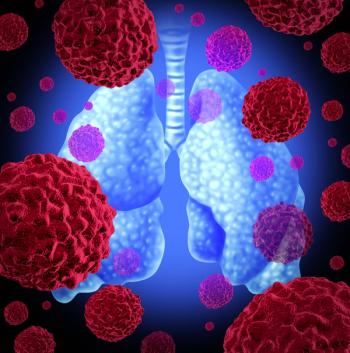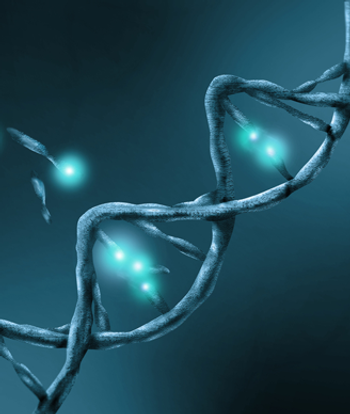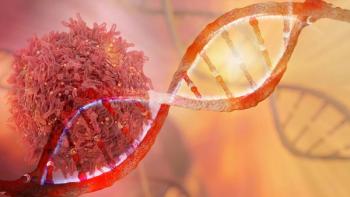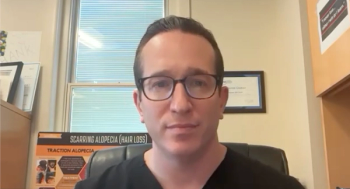
- ONCOLOGY Vol 10 No 12
- Volume 10
- Issue 12
Squamous Cell Carcinoma of the Anal Margin
This paper consists of a review of the literature on carcinoma of the anal margin, as well as the authors' institutional experience with this uncommon malignancy. The authors offer recommendations for treatment based on the size of the tumor, which correlates with the T-stage from the TNM or Union Internationale Contre le Cancer (UICC) staging systems. They recommend radiation alone or local excision for T1 lesions, radiation and elective nodal irradiation for T2 lesions, and chemoradiation, including irradiation of the primary tumor and inguinal and pelvic nodes, for T3 and T4 lesions.
This paper consists of a review of the literature on carcinomaof the anal margin, as well as the authors' institutional experiencewith this uncommon malignancy. The authors offer recommendationsfor treatment based on the size of the tumor, which correlateswith the T-stage from the TNM or Union Internationale Contre leCancer (UICC) staging systems. They recommend radiation aloneor local excision for T1 lesions, radiation and elective nodalirradiation for T2 lesions, and chemoradiation, including irradiationof the primary tumor and inguinal and pelvic nodes, for T3 andT4 lesions.
The authors' series from the University of Florida at Gainesville(1979-1993) consists of eight patients with T2, N0, M0 diseaseand two patients with T3, N0, M0 disease who were treated with50 to 69 Gy of radiation, including elective inguinal irradiation.Treatment was accomplished without "severe" complicationsor compromise of anal function, and there have been no local,inguinal, or distant recurrences with a minimum follow-up of 2years. The authors also review the literature, as scanty as itis, on staging and natural history, surgical treatment, radiationtherapy, and adjuvant chemotherapy.
Important Points Highlighted
The authors highlight several important points about this cancer.Anal margin cancers are defined as those occurring between thedentate line and the hair-bearing perianal skin. Most cliniciansagree that the anal canal extends from the anorectal ring to theanal verge. Many tumors occurring in the anal canal straddle thedentate line. In fact, most tumors occurring in the surgical analcanal are treated much the same as "true" anal cancers.There are two reasons for this: (1) the overwhelming success ofchemoradiation therapy in achieving local control of anal squamouscell cancer with preservation of anal function and a reductionin the need for permanent colostomy, and (2) the difficulty ofattaining successful healing and adequate function after excisionof lesions in the anal canal.
When T1 ( 2 cm or less) or even some T2 (2 to 5 cm) squamous cellcancers lie outside the surgical anal canal, excision alone canbe successful because of the low incidence of nodal spread. Althoughsuch excisions can be technically demanding in terms of woundclosure, functional and oncologic results are excellent. Abdominoperinealresection (APR) usually is not needed to treat these cancers.
I would agree with the authors that in cases of T3 or T4 tumorsor tumors encompassing more than 50% of the anal verge or analcanal, chemoradiation, including elective inguinal nodal irradiation,is indicated. In light of the authors' ability to deliver treatmentto the primary tumor and inguinal nodes with such low morbidityand overall effectiveness, one cannot argue with their approachof treating T2 or more extensive tumors with radiotherapy.
Although the authors present a series with virtually a 100% rateof optimal outcomes, other series that they cite, as well as morerecently published series, demonstrate both treatment failuresand morbidity with radiotherapy. For example, in a series of 17patients treated with radiation, Touboul and others found a 40%cancer-related death rate at 5 years for patients with T2 tumors,and severe anal function complications occurred in 2 patients,albeit at radiation doses of 60 to 70 Gy.[1]
Thus, for those who advise and treat patients with anal margincancers, two challenges remain: (1) the identification of patientsin whom conservative treatment is likely to fail, and (2) thedelivery of effective treatment with minimal morbidity and preservationof quality of life. The authors are to be commended for theirachievement of these goals in their series of patients with T1-2,N0, M0 anal margin cancer.
References:
1. Touboul E, Schlienger M, Buffat L, et al: Epidermoid carcinomaof the anal margin: 17 Cases treated with curative-intent radiationtherapy. Radiother Oncol (Ireland) 34(3):195-202, 1995.
Articles in this issue
almost 29 years ago
One in Three Newly Diagnosed Cancer Patients Now Receives Radiation Therapyalmost 29 years ago
Study Links Sex Hormones to Childhood Canceralmost 29 years ago
Scientists Confirm Natural Resistance to HIV-1almost 29 years ago
Breast Cancer Incidence and Mortality--United States, 1992almost 29 years ago
Chemotherapy Plus Radiation Improves Prognosis of Nasopharyngeal Carcinomaalmost 29 years ago
New Study Proves Benefits of Antiseptic-Impregnated CathetersNewsletter
Stay up to date on recent advances in the multidisciplinary approach to cancer.



















































































